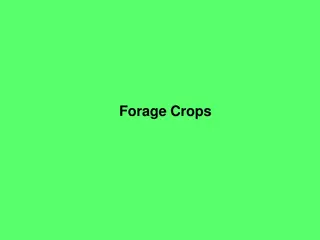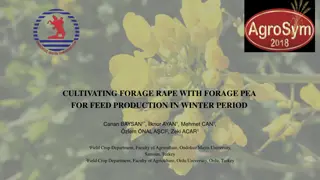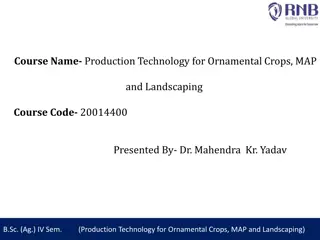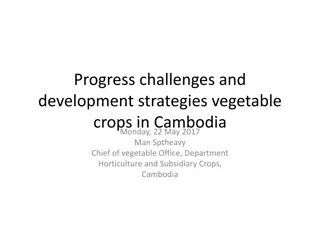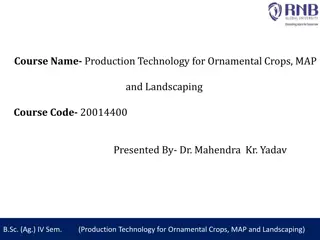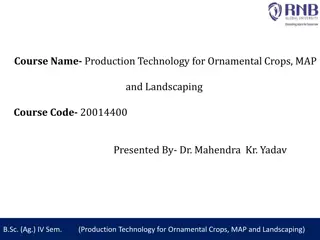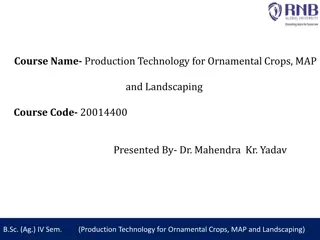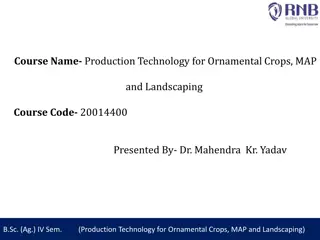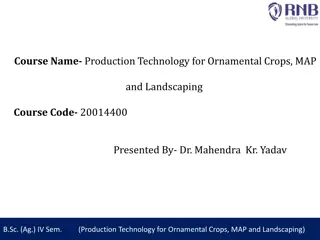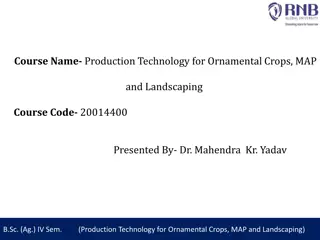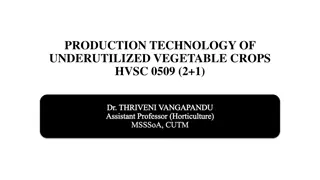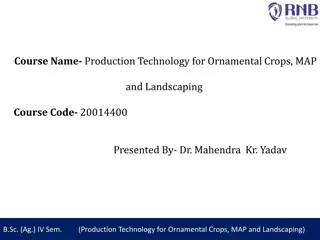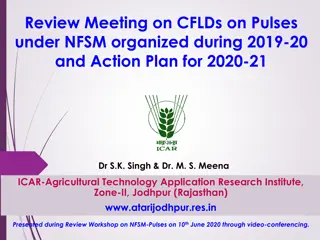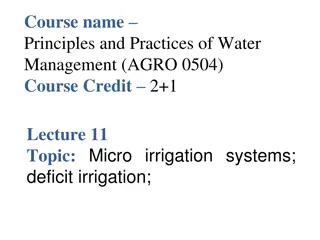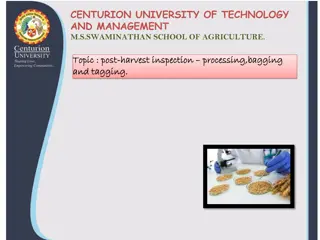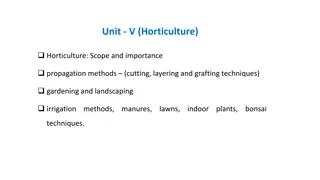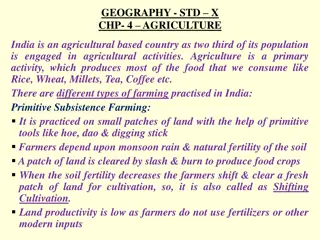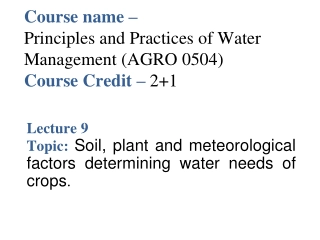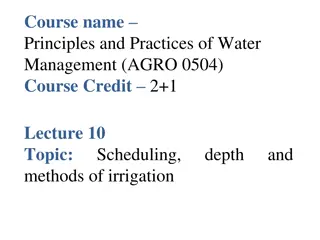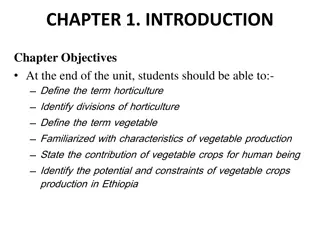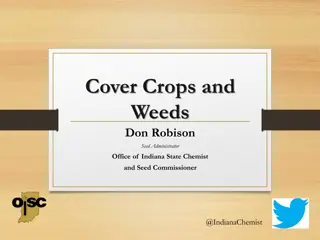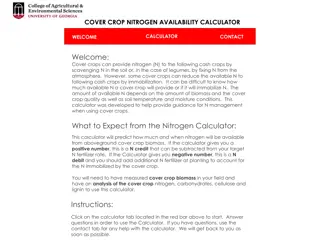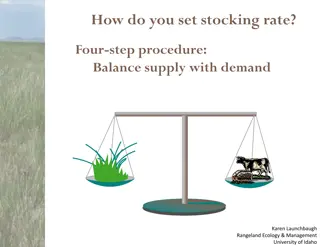Brassica and Brassicaceae Family as Forage Crops: A Comprehensive Guide
Understanding the Brassica and Brassicaceae family as forage crops is essential for maximizing agricultural yields. This article explores the taxonomy, main crops for fodder, and the specific characteristics of colza plants. Colza, both winter and spring varieties, offer high productivity and protein content, making them valuable fodder crops. Learn how to cultivate and utilize colza for green fodder, silage, press cake, and protein meal to enhance livestock productivity and quality.
Download Presentation

Please find below an Image/Link to download the presentation.
The content on the website is provided AS IS for your information and personal use only. It may not be sold, licensed, or shared on other websites without obtaining consent from the author. Download presentation by click this link. If you encounter any issues during the download, it is possible that the publisher has removed the file from their server.
E N D
Presentation Transcript
Brassica and Brassicaceae family as forage crops Artem Cherkashin, 2018
Taxonomy and classification Kingdom Plantae Subkingdom Viridiplantae I. II. III. Infrakingdom Steptophyta IV. Superdivision Embryophyta V. Division Tracheophyta VI. Subdivision Spermatophytina VII. Class Magnoliopsida VIII. Superorder Rosanae IX. Order Brassicales X. Family Brassicaceae XI. Genus Brassica L. XII. Brassica napus L.
Main crops for fodder People use plants from Brassicaceae family on many different ways, including food production, technical needs and also as fodder crops. They have few advantages which are useful and important for usage as forage crops, some of them are short period of vegetation, high productivity and protein content, high nectar bearing capacity. Overall plants from the family can be named as valuable and productive crops which give a farmer opportunity to use lands on an effective way and get high yields of biomass. Some of widely cultivated plants are colza, fodder cabbage and turnip.
Colza is annual plant which was cultivated by humans around 6 thousands years ago. There are no wild forms of this plant. The active period of cultivation started in Europe (England and Holland) in XVI century. There are winter and spring forms of the plant. Another type of classification includes food, technical and fodder kinds of colza.
Winter and spring kinds of colza dont have morphology difference, however winter colza has deeper roots depth and higher yields. Roots branch out on the 40 cm depth. There are kinds of the plant with more and less leafs, a fruit of colza is pod with 10-12 cm length. Colza s seeds are small. Winter colza is a very valuable fodder crop because it gives green yield really early and has high protein rate. But it can be recommended for growing only for regions with soft winters. Spring colza can be sown at the same time as early spring cereals and harvested in July. The first cutting should be made before flowering.
Green mass of colza can be used in forage as green fodder and for making silage (with adding 20-40 % of straw). It has 3 kg of digested protein each 100 kg of green mass, high amount of carotene and micro elements. It increases milk productivity of cattle and quality of milk. The second important type of forage which we can obtain from colza is press cake (or cattle cake or seed cake) and protein meal. 1 kg of press cake from colza has 37 % protein and 10 % of oil, protein meal around 30 % of protein. It can be ate by all kinds of animals, including birds. However, there are some important details in using colza as a fodder crop: there should be right schedule of feeding animals, feeding only with colza more than 10-12 days may cause anemia, feeding animals with too much protein meal may cause different decides, so it s more reasonable to use it as a part of combined fodder.
Fodder cabbage is perennial plant with vegetation period 140-160 days at the first year when it forms stem with 3-5 cm diameter and length up to 100 cm. Leafs have length up to 80 cm. Green mass of the plant and silage can be used as a fodder, 1 kg of the green mass has 12-14 % of dry matter, 2-5 % of sugars, 1-4 % of protein and small amount of cellulose. It increases milk productivity. But the usage of it should be no more than 15-25 kg per day for cattle because it has mustard oils which may cause different deceases and worse taste of milk. Yield of the green mass is around 30- 40 tons per hectare. It should be cutted after 80-110 days and also can be used for grazing.
Turnip is a perennial plant which can be grown in cold areas . It forms thick root and rosette of leafs in the first year of vegetation and blossom on the second year. The biggest part of the root is upside the soil which is why it can be harvested easily. Fruit is pod and contains small seeds. Vegetation period is about 80-120 days.
Compared to many other root crops it can be grown in colder conditions. Seeds can germinate in 2-3 , young crops can resist temperature about -4 for a short time. Optimum temperature for matured plants is about 15 . To form good quality roots is require a lot of water and pH no less than 5 (optimum is 6-6,5). It may give yields up to 70 tons per hectare.
Roots contain about 10 % of dry matter and up to 7 % easily digest sugars. Which is why it increases milk productivity of cows. It can be given to all kinds of cattle and pigs. However it contains also mustard oils, so it should be no more than 12-16 kg of roots per day for feeding cattle.
Thank you for your attention


